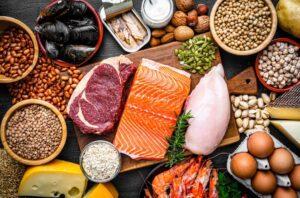How to Build a Balanced Meal: A Beginner’s Guide to Macronutrients
Whether your goal is fat loss, muscle gain, or simply improving overall health, learning how to build a balanced meal is a game-changer. A nutritious, well-balanced plate doesn’t just keep you full longer—it fuels your body with the energy it needs and supports long-term wellness. The secret lies in understanding macronutrients.
This beginner’s guide breaks down what macronutrients are, why they matter, and how you can use them to create meals that are both satisfying and aligned with your fitness goals.

What Are Macronutrients?
Macronutrients are the three main nutrients your body needs in large amounts:
- Protein
- Carbohydrates
- Fats
Each plays a unique role in bodily function and performance.
Protein
- Function: Builds and repairs tissues, supports immune health, and maintains muscle mass.
- Sources: Chicken, fish, tofu, eggs, Greek yogurt, whey protein, legumes.
- Daily Target: 0.8–2.2 grams per kg of body weight depending on activity level.
Carbohydrates
- Function: Your body’s primary energy source.
- Sources: Rice, oats, quinoa, fruits, vegetables, whole wheat pasta, potatoes.
- Daily Target: 45–65% of total calories from carbs is recommended.
Fats
- Function: Supports hormone production, brain health, and cell function.
- Sources: Avocados, nuts, seeds, olive oil, fatty fish.
- Daily Target: 20–35% of total calories from fats.
The Perfect Plate Method
Visualizing your plate makes it easier to balance macronutrients. Here’s a basic formula:
- 40% Carbohydrates (e.g., brown rice, sweet potatoes)
- 30% Protein (e.g., grilled chicken, tofu)
- 30% Healthy Fats (e.g., olive oil drizzle, avocado)
Add a generous portion of non-starchy vegetables for fiber and micronutrients (e.g., spinach, broccoli, carrots).
Meal Planning Examples
Breakfast
- Oatmeal with a scoop of whey protein, chia seeds, and berries
Lunch
- Grilled salmon, quinoa, mixed greens with olive oil and lemon
Dinner
- Stir-fried tofu with brown rice, bell peppers, and sesame oil
Snack
- Greek yogurt with almonds and a drizzle of honey

Tips for Macronutrient Balance
- Track for Awareness: Use apps like MyFitnessPal to monitor your macro intake.
- Prep Ahead: Plan meals weekly to avoid impulsive, unbalanced eating.
- Adjust for Goals:
- For fat loss: Focus on higher protein and fiber.
- For muscle gain: Increase carb and protein intake.
- Use Supplements Wisely: Add protein powders or omega-3 capsules when needed to meet daily targets.
Final Thoughts
Learning to balance macronutrients is a foundational skill for any health or fitness goal. With just a little planning and awareness, you can build meals that are not only delicious and satisfying but also scientifically aligned with your body’s needs.
Remember: balance doesn’t mean perfection—it means consistently giving your body what it needs to thrive.
Stay nourished. Stay strong.

